13 Photos That Show How Air Force One Changed Through The Years

Air Force One—part flying fortress, part Oval Office in the sky—has been the ultimate symbol of American presidential swagger for decades.
But this iconic aircraft didn’t always roar with high-tech gadgetry and sleek design. From its modest beginnings as a simple military transport to today’s airborne command center packed with classified tech and polished leather, Air Force One has evolved right alongside the presidents it’s carried.
Each version tells a story—not just of engineering, but of shifting styles, world politics, and yes, even a few quirky presidential preferences (like in-flight jelly beans and traveling pups with VIP access).
So grab your boarding pass and your best aviator shades as we take a whimsical journey through 14 snapshots of Air Force One’s transformation. Along the way, expect tales of Cold War drama, onboard barbershops, towering tails, and perhaps even a dog or two roaming the most elite aisle in the sky. Tray tables up—let’s fly!
1. The Eisenhower Era: First Jet-Powered Flight

The year was 1959, and President Dwight D. Eisenhower embarked on a mission to take presidential travel to new heights—literally! Enter the Jet Age, where speed was the name of the game, and the new Boeing 707 made its grand debut as Air Force One.
Ike, known for his military precision, couldn’t resist the allure of jet-powered propulsion. It was the first presidential aircraft with the ability to zoom across the Atlantic without a refuel. In those days, the cabin was as sleek as Ike’s iconic crew cut, setting a new standard for presidential luxury.
But let’s not forget, it was also the era of space race rivalry and Cold War coolness, where a handshake could mean peace or pandemonium. This aerial chariot was a testament to American prowess, even if it lacked WiFi and in-flight movies. Fasten your seatbelts and prepare for nostalgia!
2. Kennedy’s Camelot: A Flying White House
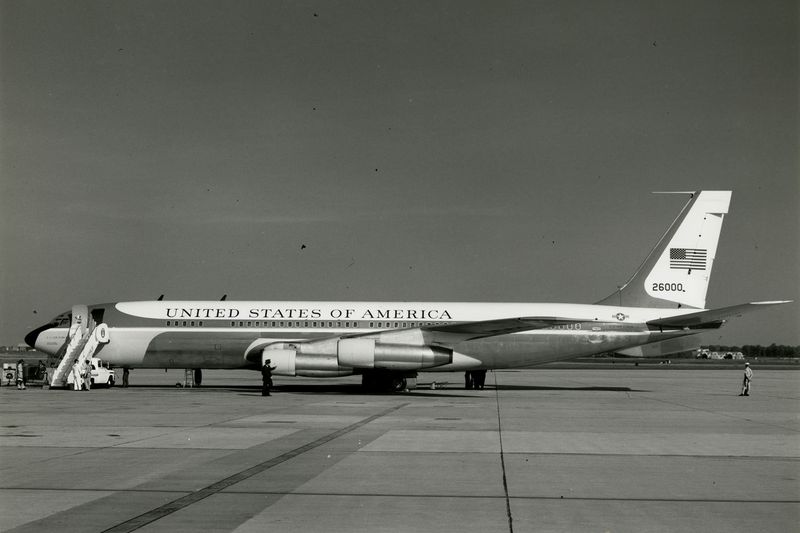
Under President John F. Kennedy’s charismatic command, Air Force One underwent a transformation that was nothing short of a sky-high style revolution. Jackie Kennedy, the First Lady of Fashion herself, had a hand in crafting the chic look of the aircraft.
The exterior now boasted a sleek blue and white design with the presidential seal proudly displayed—talk about flying in style! Inside, the vibe was all about Camelot cool, where serious diplomatic discussions took place over fine china and crystal glasses.
The aircraft truly became a “Flying White House,” complete with all the elegance and sophistication of the Kennedy era. During those high-tension Cold War days, the plane was more than just transportation; it was a symbol of hope, peace, and Kennedy’s New Frontier. Let’s just say, if Air Force One could talk, it would have tales of secret missions and stylish soirées aplenty.
3. Johnson’s Legacy: From Tragedy to Transition

Air Force One witnessed one of its most pivotal moments in history under President Lyndon B. Johnson. On November 22, 1963, aboard this aircraft in Dallas, Texas, Johnson took the oath of office following President Kennedy’s tragic assassination.
It was a moment of sorrow, sealed with solemnity as Jackie Kennedy stood by his side, still in her iconic pink outfit. The aircraft thus became a backdrop for a seamless transition of power, maintaining the continuity of leadership in a time of national grief. Yet, amidst the clouds of sadness, Johnson’s presidency took flight, ushering in the era of the Great Society.
The plane stood as a testament to resilience, diplomacy, and the unyielding spirit of American democracy. It was a flying fortress that carried not only the President but also the hopes and dreams of a nation ready to heal and move forward.
4. Nixon’s Diplomatic Wings
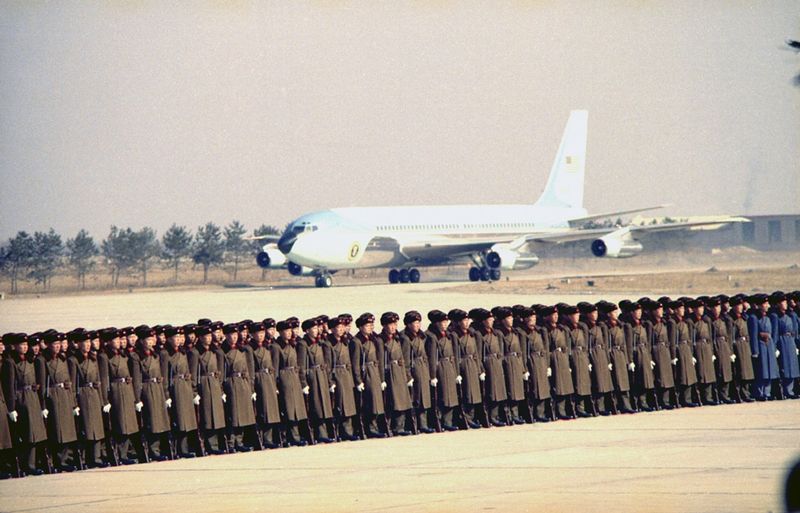
President Richard Nixon knew a thing or two about using Air Force One as a tool for diplomacy. During his presidency, the aircraft became a symbol of détente as he embarked on groundbreaking journeys to China and the Soviet Union.
Nixon’s visit to China in 1972 was a masterstroke of diplomacy, and Air Force One carried the weight of history as it landed in Beijing. The aircraft was more than just a means of transportation; it was a platform for peace, equipped with the latest technology to ensure secure communications. Inside, Nixon held crucial talks, bridging gaps and opening doors that had been closed for decades.
The aircraft’s role as an ambassador of goodwill was unmatched, proving that sometimes, diplomacy is best served at 30,000 feet. Nixon’s journeys paved the way for future engagements, proving that Air Force One is not just a plane, but a tool for global change.
5. The Ford Focus: A Steady Flight
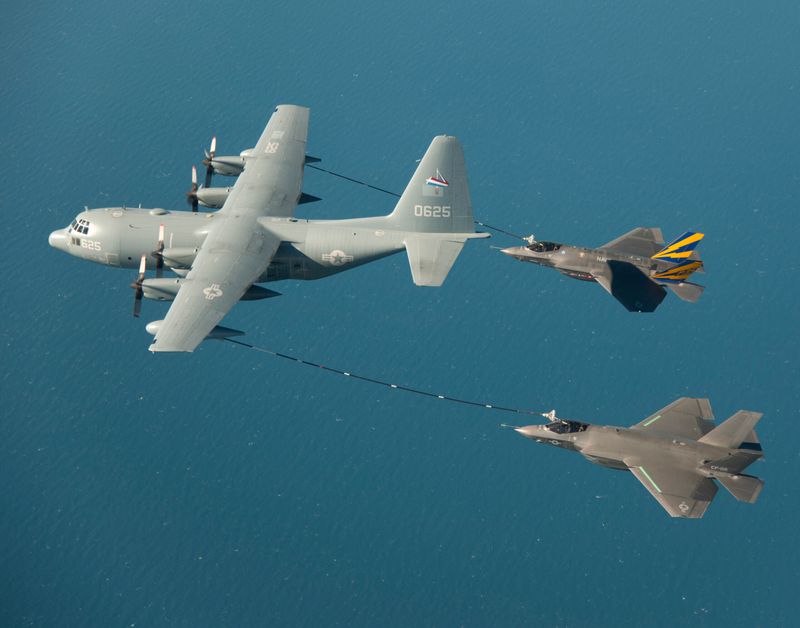
When President Gerald Ford took office, Air Force One became a symbol of stability and steady leadership. Ford, known for his down-to-earth demeanor, brought a sense of calm to the cockpit. During turbulent times, the aircraft served as a sanctuary for diplomacy and decision-making.
The mid-1970s were marked by economic challenges and political shifts, but Ford’s focus was unwavering. Whether flying to Helsinki for peace talks or returning to Washington after a successful negotiation, Air Force One was a beacon of constancy. Its unchanging exterior mirrored Ford’s commitment to integrity, while inside, it was a hub of quiet determination.
The aircraft played host to countless discussions aimed at steering America through choppy waters. Ford’s presidency may have been brief, but it was marked by a steady hand at the helm of the nation’s most iconic aircraft, guiding the country toward smoother skies.
6. Carter’s Humanitarian Flight

Under President Jimmy Carter, Air Force One took on the role of a humanitarian ambassador. Carter, known for his emphasis on human rights and diplomacy, used the aircraft as a vehicle for peace and goodwill. The late 1970s were a time of tension and transition, yet Carter’s trips abroad highlighted America’s commitment to global humanitarian efforts.
Whether flying to the Middle East for peace talks or to Africa to address poverty, the aircraft was a symbol of hope and compassion. Inside, Carter held discussions focused on building bridges and fostering understanding among nations. The aircraft’s role extended beyond politics; it became a tool for promoting humanitarian values.
Carter’s presidency may have faced challenges, but his use of Air Force One emphasized the importance of empathy and cooperation in international relations. It was a flying testament to the belief that diplomacy and kindness could soar above conflict.
7. Reagan’s Airborne Diplomacy
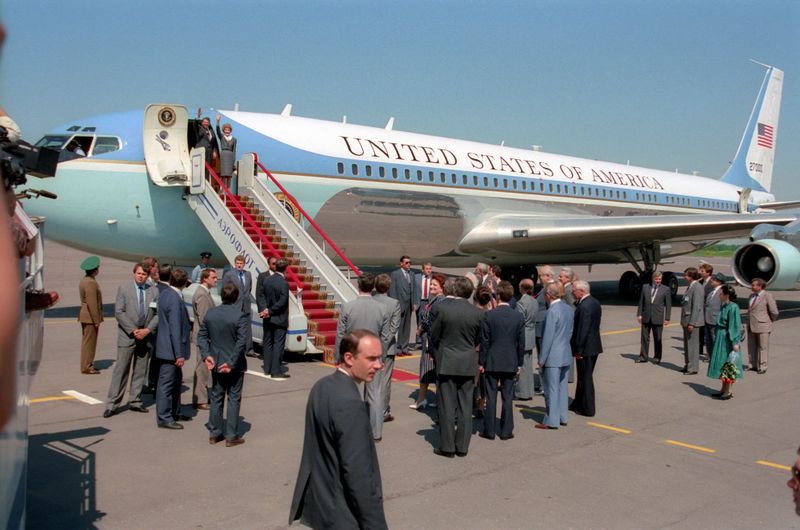
With President Ronald Reagan at the helm, Air Force One became a symbol of strength and optimism. The 1980s were defined by Reaganomics and the end of the Cold War, and the aircraft played a crucial role in facilitating diplomacy.
Reagan’s trips to Europe and meetings with Soviet leaders showcased Air Force One as a diplomatic powerhouse. The aircraft was equipped with advanced technology, ensuring secure communication and strategic planning at 40,000 feet. Inside, Reagan’s charisma and charm were as captivating as his Hollywood days, making every flight an opportunity for building alliances.
Whether delivering speeches from the steps of Air Force One or holding talks with world leaders, Reagan’s approach to diplomacy was as smooth as his one-liners. The aircraft was more than just a mode of transport; it was a stage for showcasing America’s commitment to peace and prosperity. Reagan’s airborne diplomacy paved the way for a new era of global cooperation.
8. Bush’s Global Reach
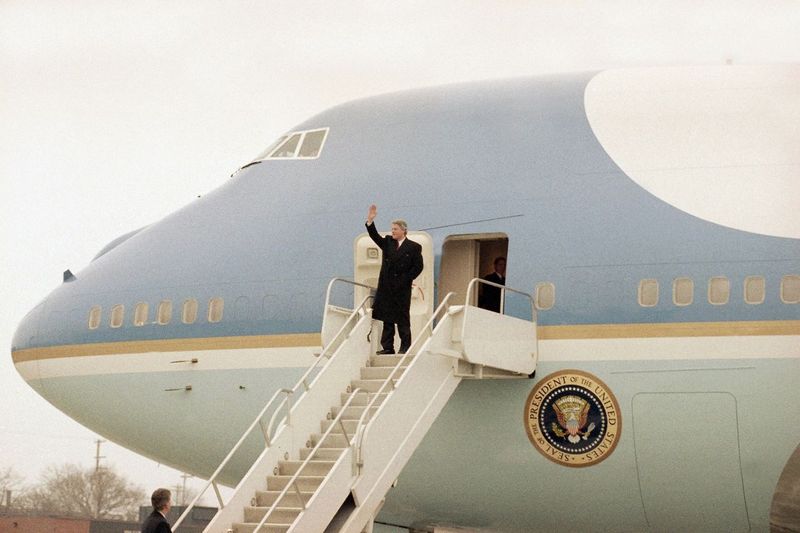
Under President George H.W. Bush, Air Force One became a global ambassador, extending America’s reach to every corner of the world. The early 1990s were marked by the end of the Cold War and the Gulf War, and the aircraft was instrumental in maintaining international relations.
Bush’s trips to Europe, the Middle East, and Asia highlighted the aircraft’s role in shaping global diplomacy. Inside, discussions focused on fostering alliances and promoting peace, ensuring that America’s leadership was felt worldwide.
The aircraft’s advanced communication systems allowed for real-time negotiations, proving that diplomacy knows no borders. Bush’s presidency emphasized the importance of global cooperation, and Air Force One was at the forefront of these efforts. It was a flying testament to America’s commitment to fostering peace and prosperity on a global scale. The aircraft’s legacy as a tool for diplomacy continued to soar under Bush’s steady leadership.
9. Clinton’s Era of Globalization
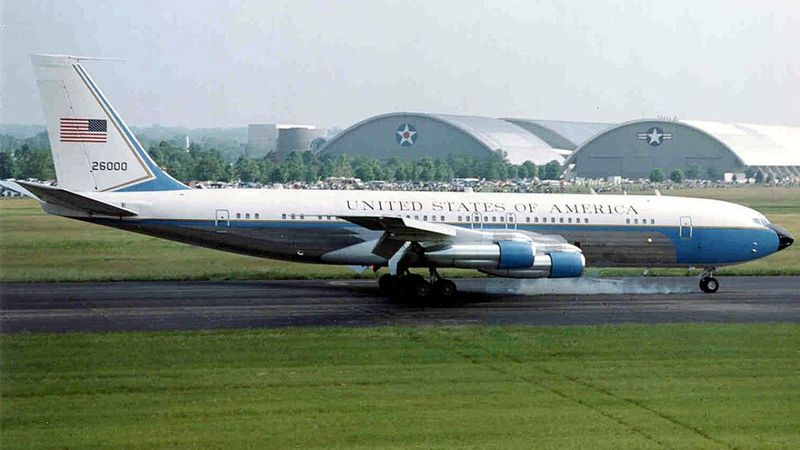
Under President Bill Clinton, Air Force One shone as a symbol of globalization and international cooperation. The late 1990s were marked by rapid technological advancements and economic integration, and the aircraft played a pivotal role in facilitating global diplomacy. Clinton’s travels to Europe, Asia, and Africa highlighted the aircraft’s importance in promoting America’s interests abroad.
Inside, discussions focused on trade agreements, economic partnerships, and building bridges across continents. The aircraft’s state-of-the-art communication systems ensured seamless connectivity, allowing Clinton to conduct diplomacy at 35,000 feet. His presidency emphasized the interconnectedness of the global economy, and Air Force One was a key player in these efforts.
It was a flying office that facilitated discussions and decision-making, proving that diplomacy is not confined to borders. Clinton’s use of Air Force One showcased America’s commitment to fostering global cooperation and prosperity.
10. Bush’s Post-9/11 Resilience

In the wake of the September 11 attacks, Air Force One became a symbol of resilience and leadership under President George W. Bush. The early 2000s were marked by uncertainty and change, and the aircraft played a crucial role in ensuring national security. Bush’s use of Air Force One during this time highlighted the aircraft’s importance in maintaining communication and coordination with world leaders.
Inside, discussions focused on counterterrorism efforts, strategic planning, and fostering international alliances. The aircraft’s advanced technology ensured secure and effective communication, proving that America’s resolve was unshakable.
Bush’s presidency emphasized the importance of unity and strength in the face of adversity, and Air Force One was at the heart of these efforts. It was a flying fortress that embodied America’s determination to protect its citizens and promote peace. The aircraft’s legacy as a tool for resilience and leadership continued to soar under Bush’s steady hand.
11. Obama’s High-Tech Haven

With President Barack Obama at the helm, Air Force One transformed into a high-tech haven, reflecting the spirit of innovation and progress. The late 2000s were defined by technological advancements and a focus on global diplomacy, and the aircraft was at the forefront of these efforts. Obama’s travels to Europe, Asia, and Africa highlighted the aircraft’s role in shaping international relations.
Inside, discussions focused on climate change, economic cooperation, and promoting democracy worldwide. The aircraft’s cutting-edge technology ensured seamless communication, allowing Obama to conduct diplomacy at 35,000 feet. His presidency emphasized the importance of innovation and collaboration, and Air Force One was a key player in these efforts.
It was a flying office that facilitated discussions and decision-making, proving that diplomacy is not confined to borders. Obama’s use of Air Force One showcased America’s commitment to fostering global cooperation and prosperity.
12. Trump’s Commanding Presence
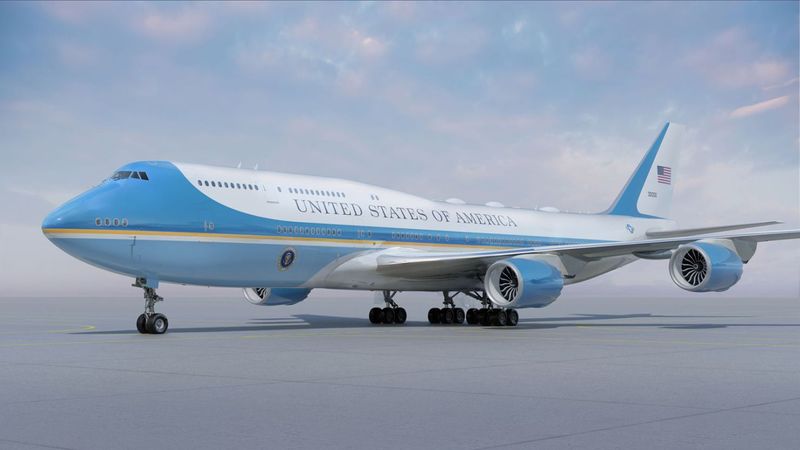
Under President Donald Trump, Air Force One became a symbol of strength and leadership on the world stage. The late 2010s were marked by political shifts and challenges, and the aircraft played a crucial role in maintaining communication and coordination with world leaders. Trump’s use of Air Force One during this time highlighted the aircraft’s importance in promoting America’s interests abroad.
Inside, discussions focused on trade agreements, diplomatic strategies, and fostering international alliances. The aircraft’s advanced technology ensured secure and effective communication, proving that America’s resolve was unshakable. Trump’s presidency emphasized the importance of unity and strength in the face of adversity, and Air Force One was at the heart of these efforts.
It was a flying fortress that embodied America’s determination to protect its citizens and promote peace. The aircraft’s legacy as a tool for resilience and leadership continued to soar under Trump’s steady hand.
13. Biden’s Era of Unity
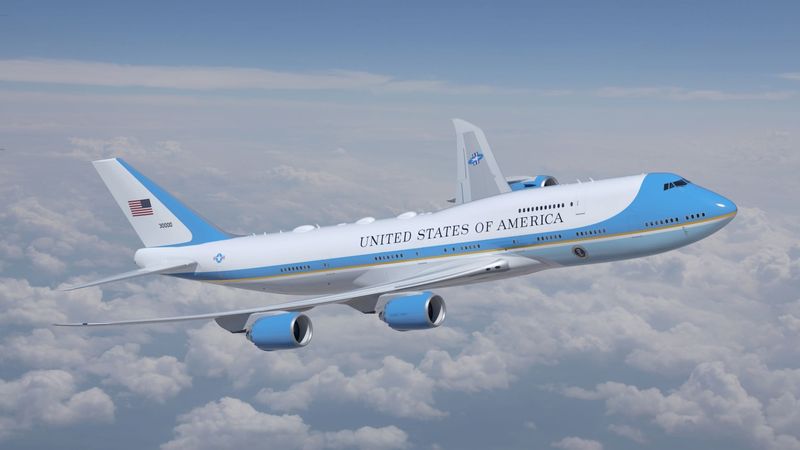
With President Joe Biden at the helm, Air Force One took flight as a symbol of unity and global cooperation. The early 2020s were characterized by challenges such as the COVID-19 pandemic and climate change, and the aircraft played a vital role in fostering international collaboration. Biden’s travels to Europe, Asia, and the Americas highlighted the aircraft’s importance in promoting democracy and human rights.
Inside, discussions focused on strengthening alliances, addressing global challenges, and promoting sustainable development. The aircraft’s advanced technology ensured seamless communication, allowing Biden to engage in diplomacy at 35,000 feet. His presidency emphasized the importance of collaboration and compassion, and Air Force One was a key player in these efforts.
It was a flying office that facilitated discussions and decision-making, proving that diplomacy is not confined to borders. Biden’s use of Air Force One showcased America’s commitment to fostering global cooperation and prosperity.
